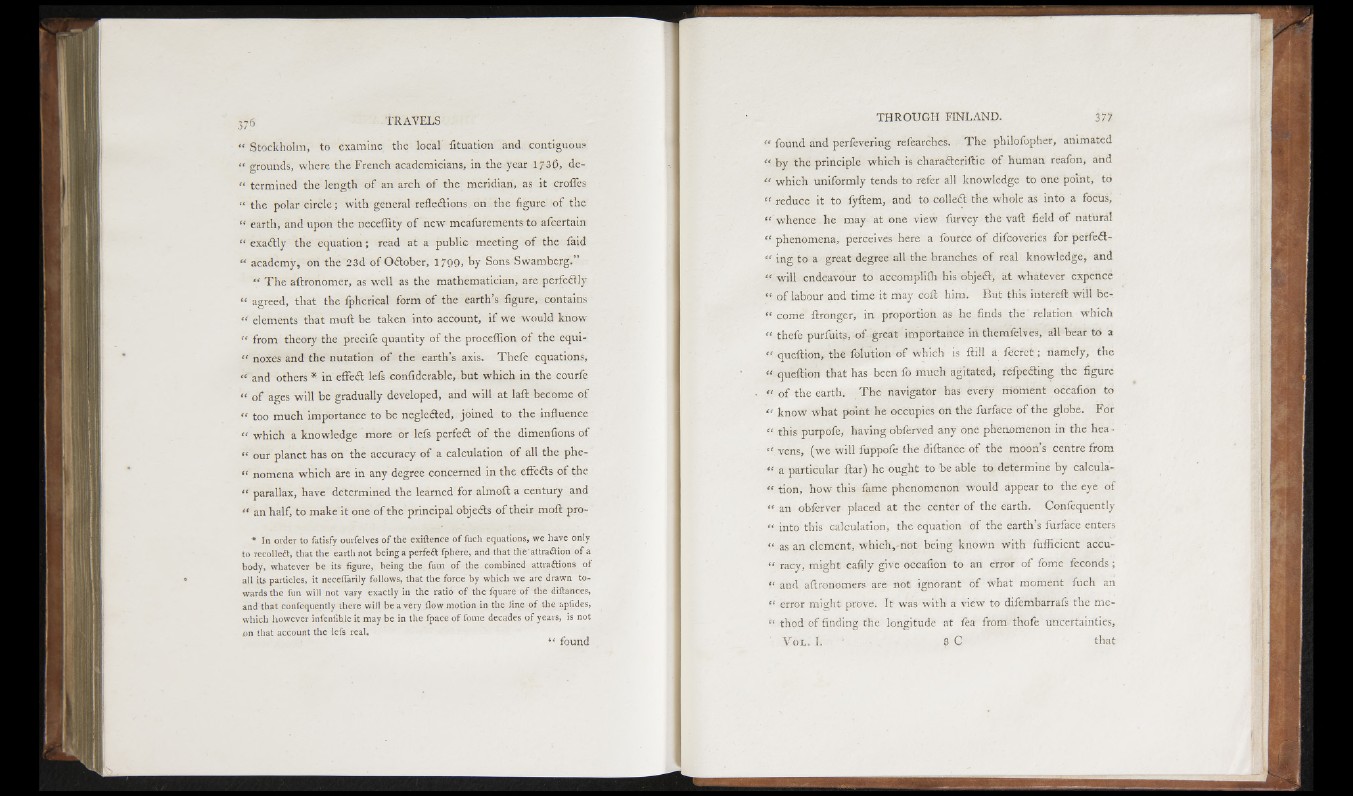
« Stockholm, to examine the local iituation and contiguous
“ grounds, where the French academicians, in the year 1730, de-
“ termined the length o f an arch o f the meridian, as it crofies
“ the polar circle ; with general reflections on the figure o f the
“ earth, and upon the neceflity o f new meafurements to afcertain
“ exactly the equation ; read at a public meeting o f the faid
“ academy, on the 23d o f October, 1 7 9 9 , by Sons Swamberg.”
“ The aftronomer, as well as the mathematician, are perfectly
“ agreed, that the fpherical form o f the earth’s figure, contains
“ elements that muft be taken into account, i f we would know
“ from theory the precife quantity of the proceflion o f the equi-
“ noxes and the nutation o f the earth’s axis, Thefe equations,
“ and others * in effect; lefs confiderable, but which in the courfe
“ o f ages will be gradually developed, and will at laft become of
“ too much importance to be neglected, joined to the influence
“ which a knowledge more or lefs perfect o f the dimenfions of
“ our planet has on the accuracy o f a calculation o f all the phe-
“ nomena which are in any degree concerned in the effects o f the
“ parallax, have determined the learned for almoft a century and
“ an half, to make it one o f the principal objects o f their moft pro-
* In order to fatisfy ourfelves of thè exiifence of fuch equations, we have only
to recollect, that the earth not being a perfeit fphere, and that the àttraflion of a
body, whatever be its figure, being the fum of the combined attraftions of
all its particles, it necefiàrily follows, that the force by which we are drawn towards
the fun will not vary exactly in the ratio of the fquare of the diftances,
and that confequently there will be a very flow motion in the line of the apfides,
which however infenfihle it may be in the fpace of fome decades of years, is not
on that account the lefs real. . ' ' ' ■
“ found
“ found and perfevering refearches. T he philofopher, animated
“ by the principle which is charaderiftic o f human reafon, and
“ which uniformly tends to refer all knowledge to one point, to
“ reduce it to fyftem, and to colled the whole as into a focUs,
“ whence he may at one view furvey the vaft field o f natural
“ phenomena, perceives here a fource o f difcoveries for perfed-
“ ing to a great degree all the branches o f real knowledge, and
“ will endeavour to accomplifh his objed, at whatever expence
“ o f labour and time it may coft him. But this intereft will be-.
“ come ftronger, in proportion as he finds the relation which
“ thefe purfuits, o f great importance in themfelves, all bear to a
I queftion, the folution o f which is ftill a fe c re t; namely, the
“ queftion that has been fo much agitated, refpeding the figure
“ o f the earth. The navigator has every moment occafion to
“ know what point he occupies on the furface o f the globe. For
“ this purpofe, having obferved any one phenomenon in the hea-
“ vens, (we will fuppofe the diftance o f the moon’s centre from
“ a particular ftar) he ought to be able to determine by calcula-
“ tion, how this fame phenomenon would appear to the eye o f
“ an obferver placed at the center o f the earth. Confequently
“ into this calculation, the equation o f the earth’s furface enters
“ as an element, which,-not being known with fufficient accu-
“ racy, might eafily give occafion to an error o f fome feconds;
“ and aftronomers are not ignorant o f what moment fuch an
“ error might prove. It was with a view to difembarrais the me-
“ thod of finding the longitude at fea from thofe uncertainties,
V o l . I. 8 C that